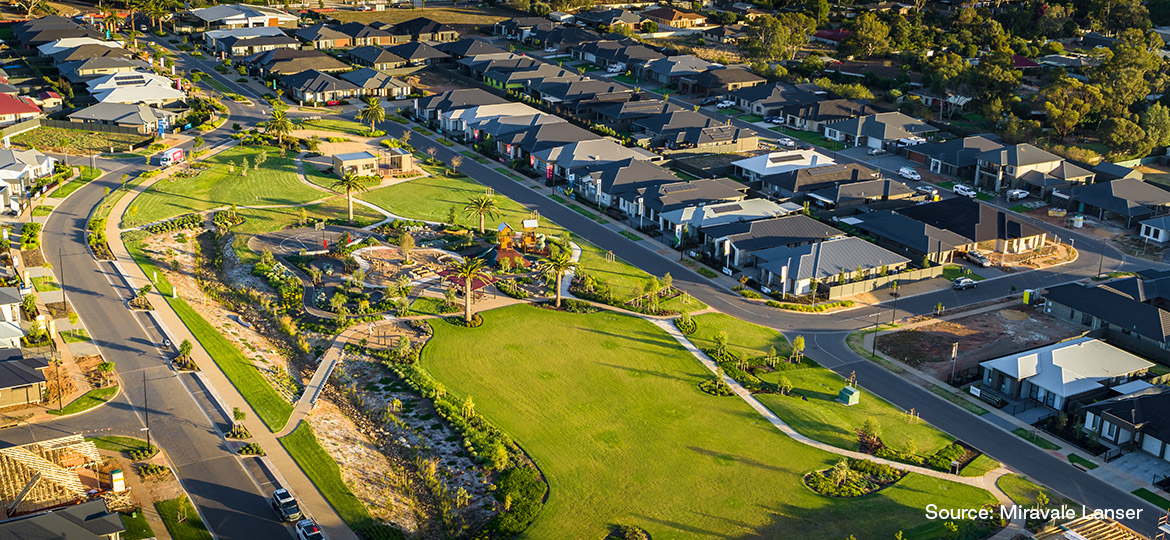The planning system is important for all of us – so how does it actually work?

From Craig Holden, Chair, State Planning Commission
Though many of us don’t spend much time thinking about the planning system, we all engage with planning each and every day. Whether we realise it or not, planning affects everything: our roads, modes of transport, workplaces, homes, neighbourhoods, and parks all exist as a part of the planning system. Good planning can make a significant impact on our lives.
And it’s not just a one-way street. Yes, our lives are influenced by the planning system, but we influence the system too. As we adapt to new technology and ways of living, planning must also flex and respond to the needs of the community. For instance, there is currently a rise in single-person households, which means that we must plan for higher numbers of smaller, lower-cost secondary accommodation, rather than the predominately large family homes of the past.
So yes, the planning system is vitally important to all South Australians. And while some of us never give it a second thought, others might be confused by the system and its array of rules, regulations and acronyms.
To help, I’ve written this “cheat sheet”. Let me explain how the planning system works. After all, it affects all of us.
The key players: demystifying the acronyms
The framework for South Australia’s planning system was established in the Planning, Development and Infrastructure Act 2016. The system functions through collaboration between the State Planning Commission (the Commission), State Commission Assessment Panel (SCAP), local councils, PlanSA, Planning and Land Use Services (PLUS), and the Minister for Planning.
These bodies work together to provide robust decision-making and positive outcomes for SA’s built environment and quality of life.
Let’s take a quick look at what each of these entities do.
What is the State Planning Commission?
The Commission is appointed by the Minister for Planning to provide independent advice and decision-making. Its members are experts in urban planning, architecture, environment, and community representation. I am the current chairperson of the State Planning Commission.
The Commission is the primary independent advisory body responsible for guiding the administration of the state's planning system. It sets strategic direction, develops policies, and ensures consistency and integration across planning initiatives.
The Commission also makes recommendations to the Minister of Planning, who considers its advice, and helps guide the decision making of state government, local government, and community and business organisations with respect to planning and development in SA. It’s responsible for assessing applications for restricted development outside of local council areas, or as directed by the Minister from time to time. Sometimes it delegates these decisions to the State Commission Assessment Panel.
What is the State Commission Assessment Panel?
The State Commission Assessment Panel (SCAP) is a decision-making body that assesses and determines development applications that are expected to have significant impact on the state. These developments are usually worth millions of dollars, are complex, controversial, or of unusual scale. SCAP also assesses and determines all Crown development and council and public infrastructure projects. It evaluates development proposals against relevant planning policies, regulations, and community interests.
SCAP comprises 7 members who are appointed by the Commission. Members have experience and qualifications across strategic planning and development, local government, urban and landscape design, building safety and construction, heritage, law and environmental management and sustainability.
Perhaps most importantly, SCAP is independent from government. This means that neither the Minister or the Commission instructs or influences the panel. Instead, this group of qualified professionals is empowered to make robust, transparent planning decisions that assess what is best for the community and the state.
Because the SCAP is autonomous in this way, it provides checks and balances that protect the integrity of the planning system and ensures that planning decisions are fair and considered.
What is PlanSA?
PlanSA is the digital platform and regulatory system that the state government introduced to modernise and streamline SA’s planning processes. Developed in consultation with the community, it’s the first of its kind in Australia: we are the only state or territory to have just one user-friendly online planning system with one set of clear and consistent rules for development across the state.
All development applications in our state must be lodged online through PlanSA, and its online tools and resources simplify the process. For example, if you want to put in a swimming pool or extend your home, you can find the planning requirements at a touch of a button, lodge an application at any time of the day or week, and then track its progress. If your project is eligible for a straightforward ‘tick box’ approval or compliant assessment, you’ll get that in days.
Curious about what is currently being proposed for development? Anyone can go to the PlanSA website to view all development applications for anywhere in the state. You can even register for notifications that will keep you updated when an application is lodged or a rezoning is proposed in your council area.
Keen to know what goes on at the meetings of decision-making bodies like SCAP? Visit PlanSA to view the agendas and minutes from every meeting.
In short, PlanSA improves transparency and efficiency in the planning system by centralising information and enabling digital interactions between government agencies, developers, and the community.
What is Planning and Land Use Services?
PLUS is the government agency responsible for delivering planning services, facilitating development, and managing land use across SA. It works closely with local councils, developers, and other planning professionals to implement planning policies and plan our state’s towns, cities, and infrastructure.
PLUS is made up of an experienced group of public servants who provide planning advice, assess some development proposals, and monitor compliance with regulations. They also engage in community consultation and deliver strategic initiatives to address housing needs, infrastructure requirements, and environmental considerations.
Together, the Commission, SCAP, PlanSA and PLUS form a healthy planning system where strategic direction, regulatory oversight, digital innovation, and operational implementation come together to achieve sustainable development outcomes and meet the evolving needs of our communities.
Other planning authorities
Some planning decisions are not made by the Commission or the SCAP, and are instead made by local councils, council assessment panels, or accredited professionals. I’ll now explain a bit more about how these decisions are made.
Assessing development proposals: who does what?
Each development proposal is assessed on a case-by-case basis and will follow its own unique assessment pathway. This means that a proposal to develop a multi-story building of units will be assessed differently than a proposal to build a shed, a shop, or an airport. In addition, assessment pathways can change depending on a development’s location, what sort of land zone it is in, and any overlays that may apply.
Generally, more straightforward proposals will be assessed by local councils or a Council Assessment Panel (CAP), while more complex proposals will be assessed by SCAP. Proposals of statewide significance may land with the Commission or even the Minister for Planning.
Of course, there are always exceptions to the rule, so if you want to know which assessment pathway will apply to any given development proposal, it’s always best to have a look on the PlanSA website.
In any case, your local council, CAP, the SCAP, or the Commission will assess each application against the Planning and Design Code and other factors like zoning regulations, environmental impact, infrastructure requirements, and community feedback. They may also consult with other government agencies and experts during this process.
Finally, the relevant authority will make a decision on the application: it will be approved, conditionally approved, or rejected.
Throughout the assessment process, transparency and adherence to planning principles ensure that developments are in the best interest of the community and the environment.
Having a say: the difference between public notification and community engagement
Public notification and community engagement serve different purposes, although they both involve informing and involving the community in the planning process.
Many proposals (especially for significant, complex, or restricted developments) require public notification. Public notification means that residents and business who live or operate nearby the proposed development must be informed about the application and given the opportunity to provide feedback or objections.
Public notification is a legal requirement in many jurisdictions, including SA, to ensure transparency and accountability in the planning process.
On the other hand, community engagement emphasises collaboration and participation. It seeks to foster meaningful interactions between planners, developers, decision-makers, and community to ensure that diverse perspectives are considered in the planning process.
This type of engagement facilitates informed decision-making by providing opportunities for community to contribute their knowledge, concerns, and preferences regarding planning proposals. It can help identify potential issues, explore alternative solutions, and enhance the acceptability of planning decisions.
In the South Australian planning system, community engagement is governed by the Community Engagement Charter.
Summing up
I hope you now have a greater appreciation for how our state’s planning system works.
As you now know, SA boasts the best, most accessible planning system in Australia, as ranked by the Business Council of Australia. Not only is our system incredibly efficient, it’s been carefully structured to ensure that development decisions are given independent and robust evaluation, and our communities are engaged in the decisions that will affect them.
Above all, our system aims for transparent and inclusive decision-making that balances development needs with community interests and well-being. And I think that’s something that all South Aussies can be proud of.
